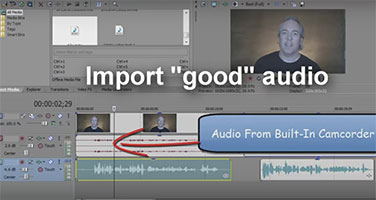Nocturne Cello is the second instrument released in the highly rated Soloist Series of Orchestra Tools. Recorded in Berlin at the well known Teldex Studio. Captured in a solo booth producing a more intimate and direct sound focusing firmly on expression, tone, and realism.
Appearing in a CAPSULE (Control And Performance Symphonic Utility Engine), Orchestra Tools very own articulation-management system. A “Catch All” utilizing scripting technology.
Upon opening, you will be greeted by a symphony containing several patches with sustains and legatos varying in length. A very cool feature which ends by individually fading to it’s designated length and time.
Read more here: http://www.musictech.net/2016/07/orchestral-tools-nocturne-cello/
Audio Recording
Avoiding Excessive Stage Volume
Sounding great on stage can be attributed to different factors, but the biggest contributor is volume. A well balanced and controlled volume will make your sound great but excessive stage volume could lead to disaster for the band and for your audience as well.
Let’s begin with soundcheck, high monitor volumes often set a stage that everyone tries to match up to thus creating a chain reaction. Keeping monitor volumes as low as possible is the key, preventing a tug-o-war of sound for your band and your audience as well. Keeping it well balanced makes your band sound great on-stage.
Read more here: http://en.audiofanzine.com/live-sound/editorial/articles/the-enemy-of-the-good-is-volume.html
A Simple Hack for Better Recording and Mixing
Left Center Right panning also known as LCR recently became a hot topic as a method for placing tracks in the stereo field. LCR represents the three main spots in the stereo spectrum, exactly how speakers and headphones work. The left speaker the right speaker and the middle called auditory illusion proving balance between the latter two.
Understand that better song arrangement equals better mix. Planning is the key, knowing which side you will place certain instruments to provide better quality sound. LCR forces you to balance your arrangement and recording ultimately leading to a better and fuller track recording.
Read more here: http://therecordingrevolution.com/2016/07/06/why-lcr-panning-is-a-hack-to-better-recordings-and-mixes-of-course/
Music Kits by Envato
Introducing Music Kits, Envato’s brand new offering. A flexible and ready to use audio solution for your multi-media projects. Music Kits is so easy to use you can bring your customization and control to a whole new level.
Music Kits consist of fully mixed-and-mastered, professionally crafted music that you simply drag and drop into song sections that you yourself customize, providing you greater flexibility than using traditional royalty-free music.
Song sections come with clean endings providing you edit free and seamless transitions. You get high-quality WAV audio files compatible with any audio or video editing software of your choice, so no extra mixing or musical expertise is needed.
Read more here http://music.tutsplus.com/tutorials/this-is-why-envato-music-kits-are-the-essential-audio-solution-to-any-project–cms-26553
Standard Order of Operations for Audio Post-Production
 Anyone doing a video project knows that audio can either make or break their projects. That’s why understanding the processes involved in audio post-production is super important. Avoid getting confused in the many stages of production by learning these step by step processes, understanding what happens in each step and finding the work flow that best suits you.
Anyone doing a video project knows that audio can either make or break their projects. That’s why understanding the processes involved in audio post-production is super important. Avoid getting confused in the many stages of production by learning these step by step processes, understanding what happens in each step and finding the work flow that best suits you.
Take a deeper look at each step having evolved through the years ensuring the quality of audio for movie and video productions. Whether working with a big team or doing small scale projects these steps will bring efficiency to your workplace.
Check out our own post (with video) – How To Get Good Audio On Your Videos – about how to make the narration on a talking-head (or any kind, really) video sound MUCH better than about 90 percent of videos out there.
Read more about this in the Audiotuts article here: http://photography.tutsplus.com/tutorials/understanding-the-phases-of-audio-post-production-for-video–cms-26688